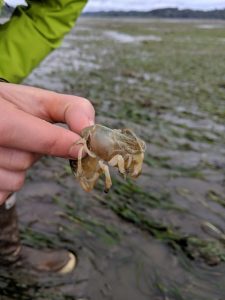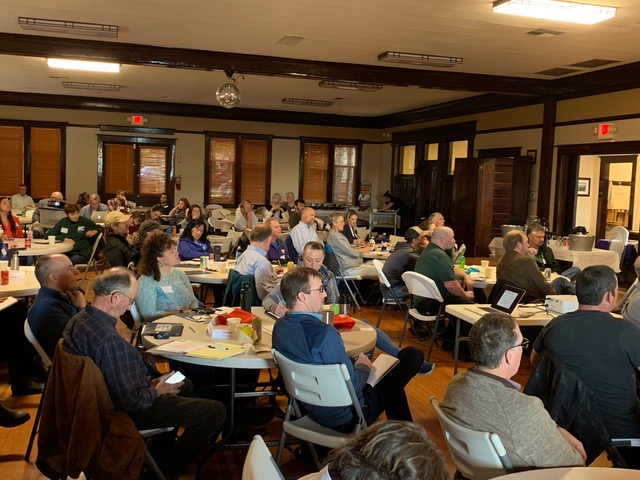December 17, 2019

A ghost shrimp in Willapa Bay
Willapa Bay and Grays Harbor are home to some of the most productive oyster farms in the country, but in recent years these estuaries have been plagued by an active burrowing shrimp population that threatens much of coastal Washington’s oyster grounds.
Washington Sea Grant hosted the first of four workshops in support of the Washington Coast Shellfish Aquaculture Study in South Bend recently, kicking off a three-year applied research project to assist planning and collaboration amongst tideland managers, owners and regulators in southwest Washington. Videos of the presentations of the first workshop are now available online here.
The study is gathering existing data and advancing research to better understand the intertidal ecosystems of Willapa Bay and Grays Harbor – with a focus on interactions between shellfish aquaculture, eelgrass and burrowing shrimp.
On the first day of the two-day workshop, researchers presented the results of previous work on nearshore ecosystems, eelgrass, oysters and burrowing shrimp to a rapt audience of primarily shellfish farmers and resource managers. The workshop opened with words of support by Senior Policy Advisor, Ocean for Governor Inslee’s office, Jennifer Hennessey. WSG invited more than a dozen experts to speak, including local, regional and international scientists from as far away as Japan and New Zealand.
The second morning was spent hearing research presentations specific to burrowing shrimp with the afternoon devoted to roundtable discussions where the participants broke out into small groups that included members of the public, researchers, state agency representatives, tribal representatives, shellfish farmers, resource managers, and WSG staff.
As the study progresses, WSG will continue to compile existing information and coordinate new research about the bays’ ecosystem to advance a shared understanding among the scientists, resource managers and shellfish farmers. With a better understanding of the biology of the shrimp, their interaction with native eel grass, and oyster farms, our local farmers and managers will be able to make better informed and effective choices, and ultimately work together to develop solutions at the ecosystem scale.

DEC
2019